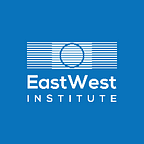Drawing Lessons from Stabilization Operations in the MENA Region
Politicians and commentators commonly mention the need for “stability” and “stabilization” when referring to the current situation in the broader Middle East and North Africa (MENA). For the policy community concerned with Afghanistan and Iraq, this has been true for over a decade. Now, key international actors, regional players and local constituencies alike are similarly consumed with the question of how to put an end to the years of revolutionary uncertainty, upheaval and conflicts in several countries in the region — sparked by the 2011 Arab uprisings and exacerbated by domestic infighting and foreign meddling.
Indeed, most pundits agree that stabilization is what the broader MENA region desperately needs. Policymakers seem willing to work towards that goal of stability. But at the same time, a lack of consensus around what stability entails and how to get there keeps fueling instability instead.
When assessing international actors’ ideas concerning the meaning of “stability” and the process of “stabilization,” it generally is agreed that stability can be understood as an environment that is reasonably predictable and non-violent, while stabilization is a process that entails the blending of military means with other tools of statecraft and foreign policy. It brings together different, overlapping and interacting policy dimensions, which in institutionalized settings often is referred to as a “whole of government” or comprehensive approach.
Starting with the international reaction to the Balkan Wars of the 1990s, experiments with blending military, political, economic, humanitarian and developmental tools — as well as elements of transitional justice and reconciliation — became the norm. In the past decade, Afghanistan has served as the most important litmus test for this approach. But unfortunately, for all the tryouts in Kosovo, Afghanistan, Iraq, Libya and elsewhere, the stated ambitions versus realities on the ground have remained far apart and the few success stories, such as in Iraq’s Anbar province, short-lived.
The problem is that beyond the common, basic understanding of the two buzzwords, ideas differ regarding which non-military policy instruments should be part of the stabilization tool box, which instruments are priority, what the priorities are and whether a specific sequencing is appropriate. This already holds true when comparing approaches to stabilization within the West, and even within the different policy communities of a specific country. Military actors, for example, come to the table with different professional cultures and priorities from those working on the humanitarian and development aspects of stabilization.
Most importantly, with an increasing number of external actors, ideas about what the end state should be and what acceptable forms of stability are also have started to differ. Indeed, the number of voices and ideas increases significantly when actors from other parts of the world are equally involved with “stabilization operations.” The West might have an ideal society in mind while others, including Russia and the Gulf countries, have their own vision, reflecting what they believe makes for a stable situation.
Current developments in the MENA region, where the West is no longer the only cook in the kitchen, are shaped by this mismatch of explicit and implicit objectives and the differentiation in views regarding acceptable paths towards stability. Reflecting on recent experiences of stabilization efforts in the MENA region, Western policymakers can learn several lessons, including:
